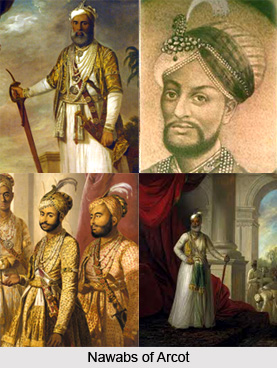 History of Tirunelveli district in Tamil Nadu preserves a number of information with regard to the origin of the name of this district as Tirunelveli. This district is the southern-most district in the state which is described as a microcosm of Tamil Nadu, due to its mosaic and varied physical and geographical features including low plains and lofty mountains, dry Teri structures, cascades and rivers, thick inland forest and seacoast, fertile alluvium and sandy soils, a variety of fauna and flora and protected wild life.
History of Tirunelveli district in Tamil Nadu preserves a number of information with regard to the origin of the name of this district as Tirunelveli. This district is the southern-most district in the state which is described as a microcosm of Tamil Nadu, due to its mosaic and varied physical and geographical features including low plains and lofty mountains, dry Teri structures, cascades and rivers, thick inland forest and seacoast, fertile alluvium and sandy soils, a variety of fauna and flora and protected wild life.
Mudikonda Cholamandalam of the Imperial Cholas, Thenpandiyanadu of the early Pandyas, Tirunelveli Seemai of the Nayaks, Tinnevelly district of the British East India Company and the British administration and Tirunelveli district of Independent India was separated on the 20th of October 1986. The separated districts were known as Chidambaranar district and Nellai-Kattabomman district and later the name of the district was christened as Tirunelveli-Kattabomman district. By the decision of the Government of Tamil Nadu to name all the districts by the name of the headquarter town, Tirunelveli-Kattabomman district was named Tirunelveli district and Chidambaranar district as Thoothukudi district.
On acquisition from the Nawabs of Arcot in 1801, the British named the place as Tinnevelly district though their headquarters was first placed in Palayamkottai the adjacent town, where the British had their military headquarters during their operations against the Palayakars. There are two reasons which may be attributed for naming it after Tirunelveli. One is because, it was and is the chief town of the district and the other is that it was already called as Tirunelveli Seemai under the Nayaks and Nawabs.
The Tirunelveli Sthalapurana lay down a tradition for the origin of the name Tirunelveli. According to the Puranic version, one Vedasarma, a staunch devotee of Lord Shiva, while on his pilgrimage from the North to the South was invited by Lord Shiva in his dream to his abode on the banks of the sacred River Tamiraparani. The delighted devotee came to Sindupoondhurai on the banks of the river and stayed there with his family. Once there was a famine which compelled Vedasarma to collect paddy by way of begging and continuing his daily prayers. One day he spread out the paddy to dry under the Sun before the Lord, and went for his ablutions in Tamiraparani. He prayed to the Lord for rain which he thought could be a remedy for the famine. His prayer was answered and when he was bathing, a thunder storm broke-out and it rained heavily. Vedasarma rushed to the place where he had spread the paddy and to his utter surprise he saw that despite rain around the area, the paddy that he had spread did not get even a single drop of rain and did not get soaked. Since then, according to the Indian Puranas the place is called as `Tiru-nel-veli` or sacred hedged paddy.






